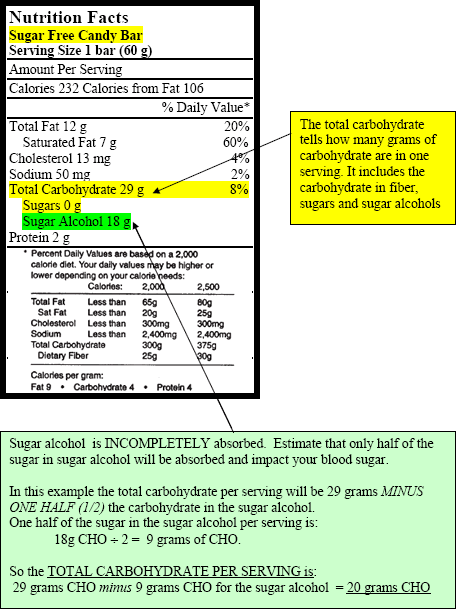Understanding sugars
Contrary to popular opinion, people with Diabetes can eat sugars and still meet their blood glucose goals. Research shows that the total amount of carbohydrate you eat has the biggest effect on your blood glucose level. So how does sugar fit in the picture?Sugar is found in:
- Table sugar
- Brown sugar
- Molasses
- Honey
- Powdered sugar
- Cane sugar
- Raw sugar
- Agave nectar
- Syrups, like corn syrup and maple syrup
- Other names of sugar you might read are glucose, fructose, dextrose, maltose and sucrose
Sugar, like all carbohydrates, contains food energy. Every gram of carbohydrate has about 4 calories. One teaspoon of sugar has about 5 grams of carbohydrate, and 20 calories. One tablespoon of sugar has about 15 grams of carbohydrate, and 60 calories. So it may be no surprise that sugar and sugar-containing foods still have an impact on your blood sugar and body weight, just like other carbohydrate foods.
Can I include sugar in my meal plan? You can occasionally eat sugar and sugar-containing foods. Just like other carbohydrate foods, count the grams of carbohydrates in your sweets, and be sure to stay within your carbohydrate budget for the meal or snack. Sweets or desserts will need to replace another carbohydrate choice in order to meet your blood glucose and body weight goals. Because sugar-containing foods may also be high in calories and fat, aim for small portions of sweets.
How do I read food labels for sugar? When you read food labels, the grams of sugar are already included in the total carbohydrate amount, so you do not need to count this sugar amount separately. The grams of sugar listed include both natural sugars, from fruit or milk, and added sugars. To learn more about label reading, view our Nutrition Facts Label example.
A word on treating a low blood sugar (Hypoglycemia) Simple sugars are easy to digest, and can raise blood glucose levels quickly if eaten alone. That’s why these are the types of sugars suggested for treating hypoglycemia, or low blood glucose. But when sugar is mixed with fat, digestion is delayed. Foods that contain nuts, peanut butter, or fat such as chocolate, candy bars, ice cream or cookies don’t raise the blood sugar quickly enough. So if you have a low blood glucose, stick with fat-free sugar choices like jelly beans, fruit juice, or glucose tablets. Learn more about hypoglycemia. View our printer-friendly Guide to Sweeteners.
Sugar alcohols
Sugar alcohols are a type of reduced calorie sweetener and may be found in products that are labeled “sugar-free” or “no sugar added.” This can include sugar-free candies, desserts, and energy bars. But don’t be fooled – sugar alcohols are still a form of carbohydrate, and they still affect your blood glucose levels.Examples of sugar alcohols include:
- Erythritol
- Glycerol
- Hydrogenated Starch Hydrolysates
- Isomalt
- Maltitol
- Mannitol
- Lactitol
- Sorbitol
- Xylitol
What you need to know
Because sugar alcohols are harder for the body to digest, the effect on blood glucose levels is less than sugar. Some sugar alcohols have about half the amount of calories compared with sugar and other types of carbohydrates, while others like, Erythritol, have zero.
When counting carbohydrates for products made with sugar alcohols, subtract half of the grams of sugar alcohol listed on the food label from the total grams of carbohydrate.
Remember that because sugar alcohols are harder for your body to digest, eating too many sugar alcohols may cause digestive complaints like gas, cramping and diarrhea. So while it is safe to eat products with sugar alcohols, it is best to limit the amount.
Practice counting carbohydrates using the sample food label

- Locate the total carbohydrate in one serving. You will see that the total carbohydrate is 29 grams.
- The amount of sugar alcohol is 18 grams per serving.
- Calculate half the grams of sugar alcohol (18 grams of sugar alcohol divided by 2 equals 9 grams).
- Subtract only half of the grams of sugar alcohol from the total carbohydrate Count this product as 20 grams of carbohydrate (29 grams total carbohydrate minus 9 grams sugar alcohol equals 20 grams of carbohydrate).
View a printer-friendly Guide to Sweeteners.